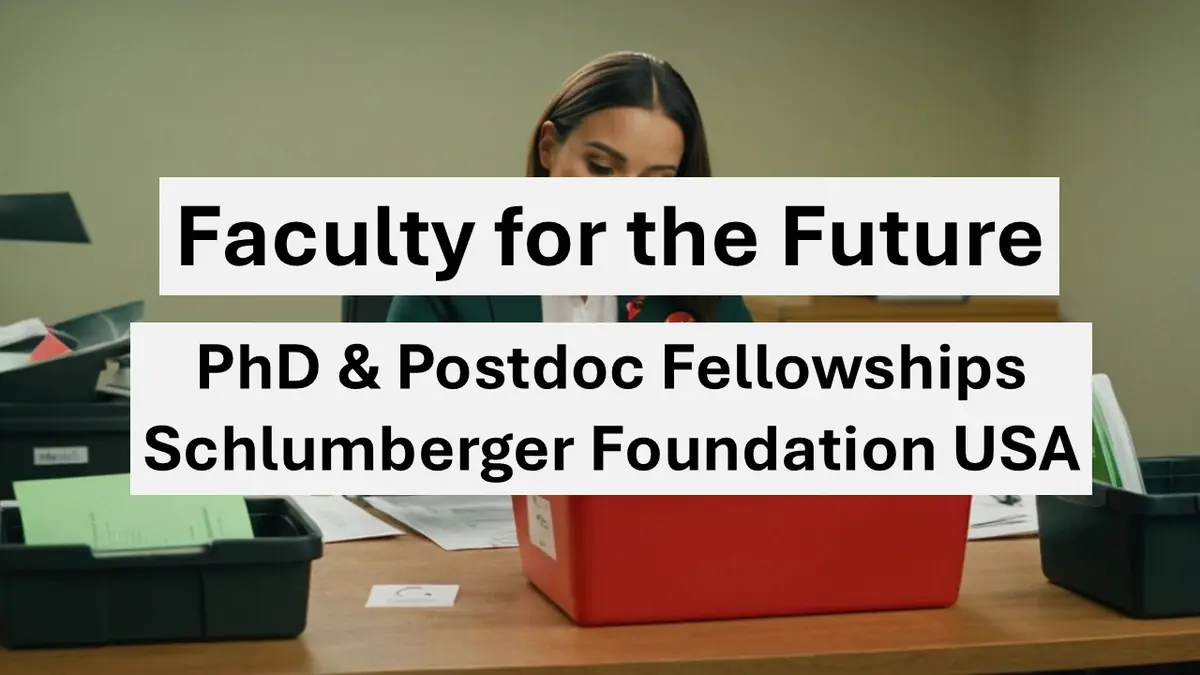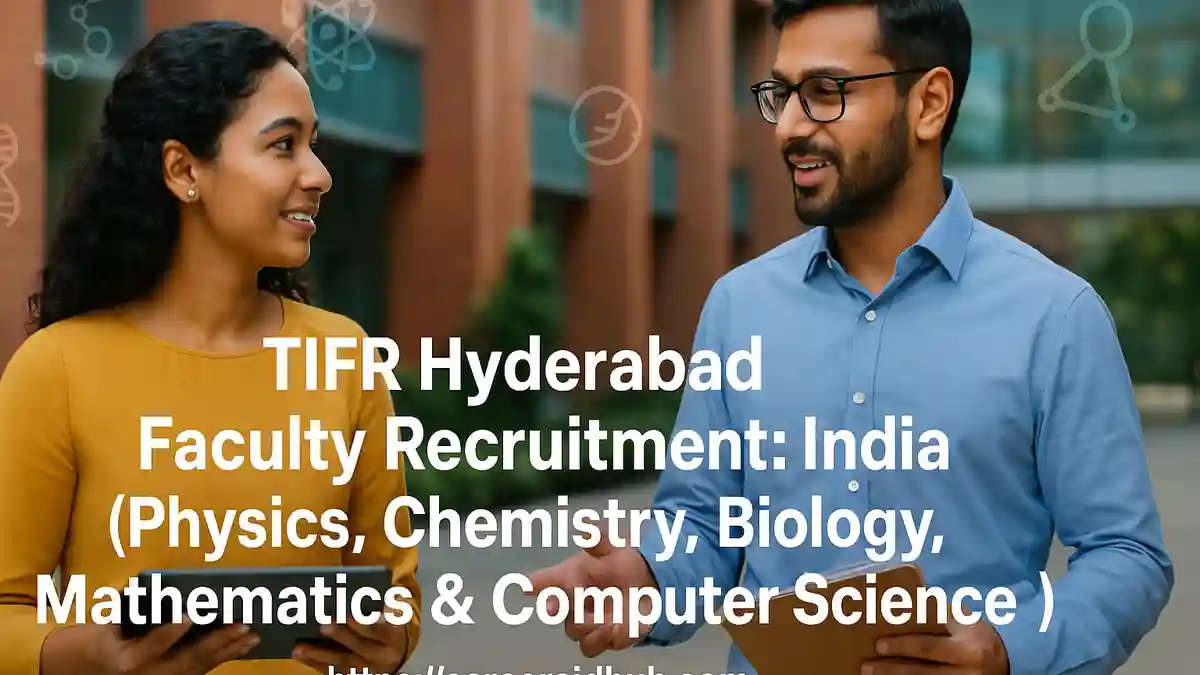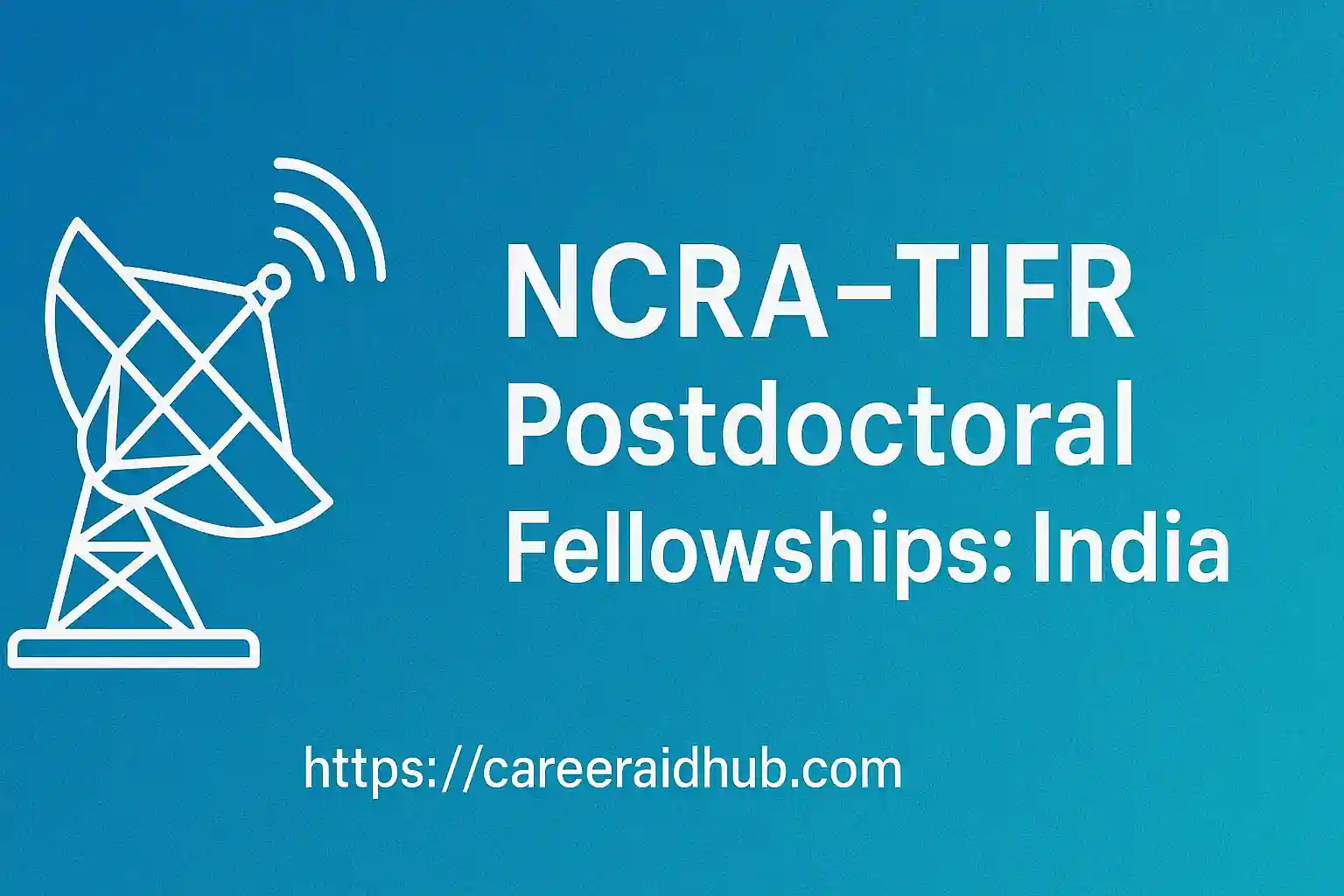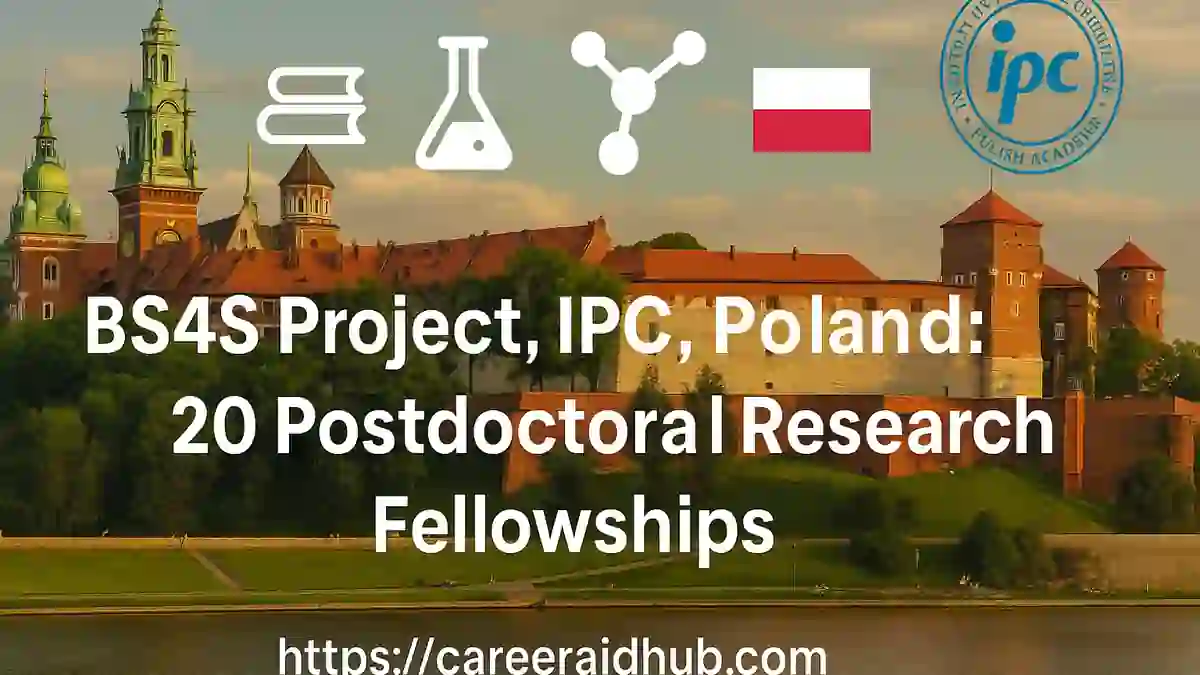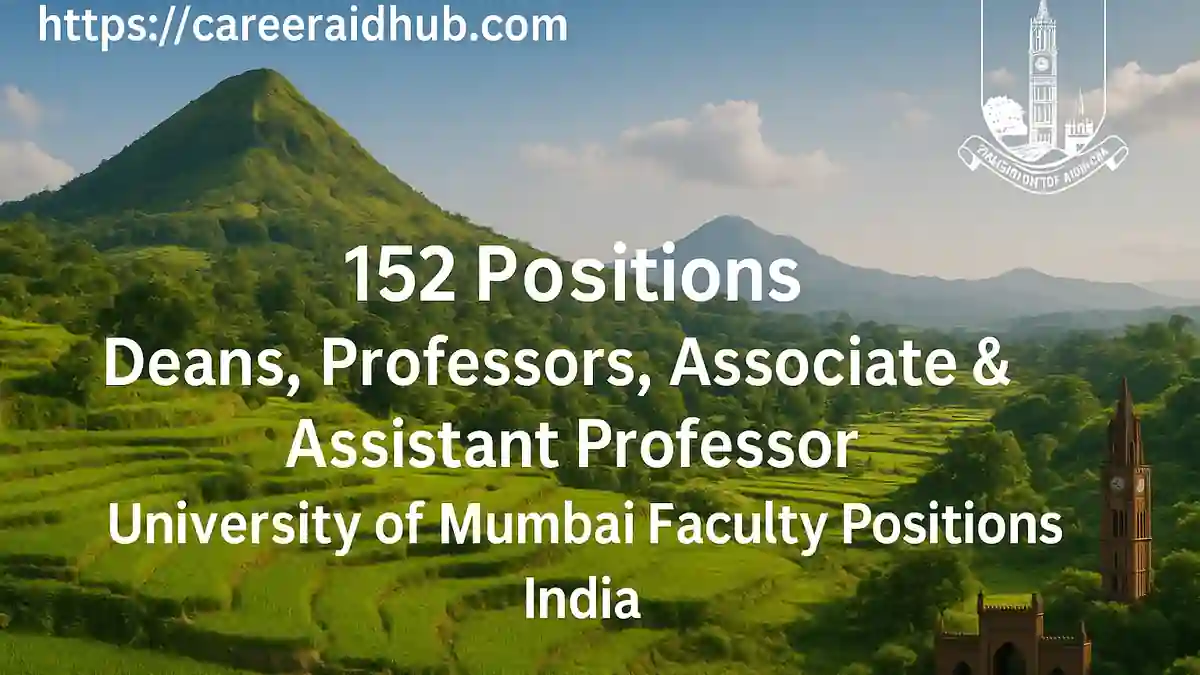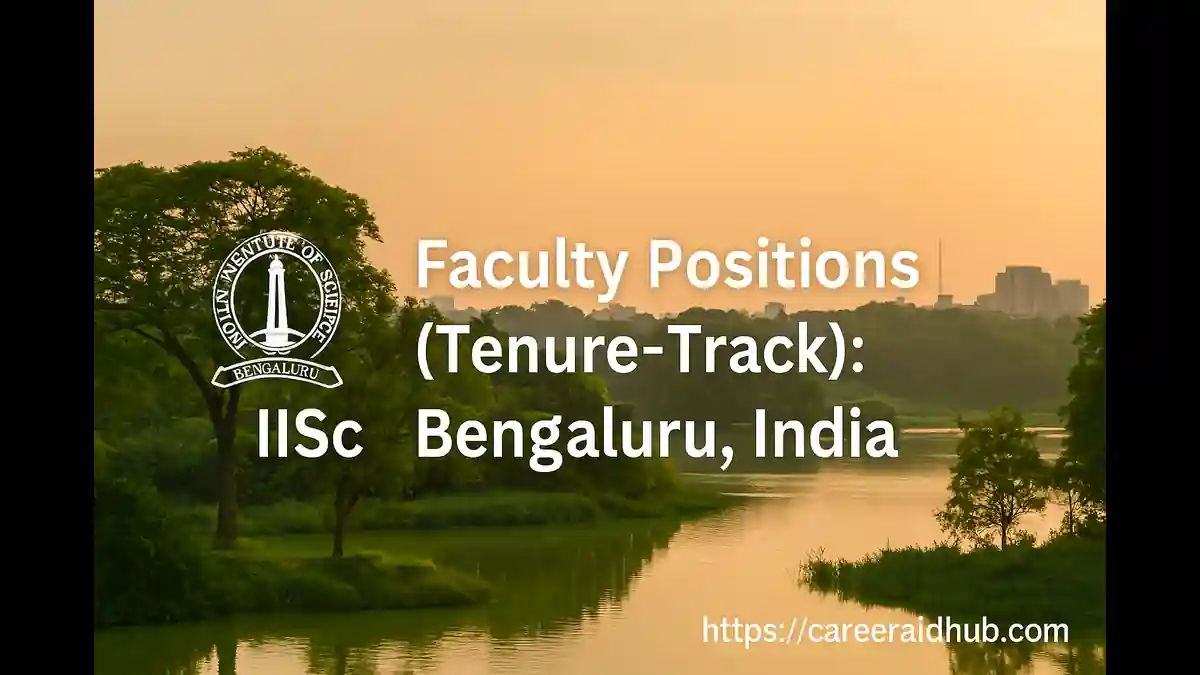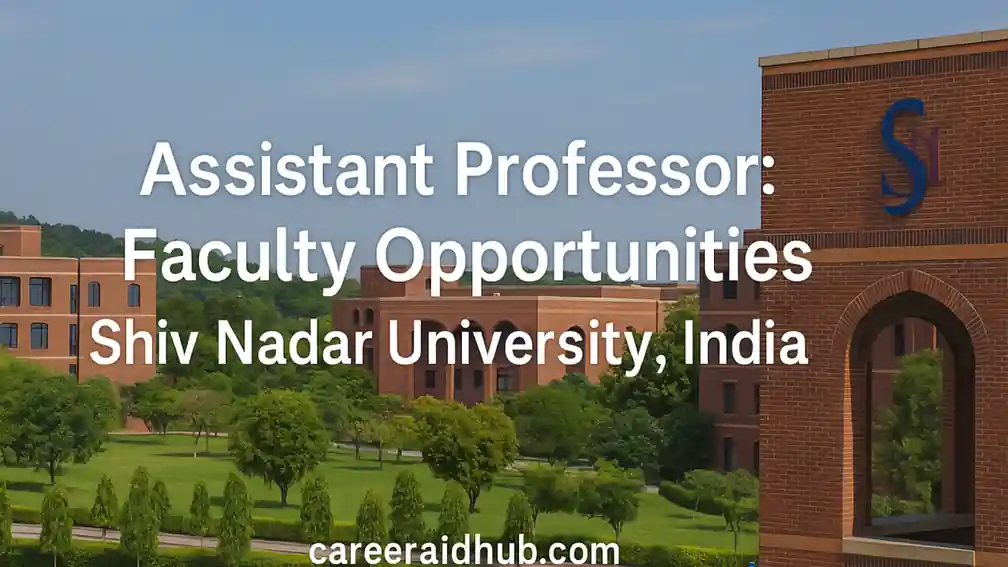Empowering Women in STEM: Schlumberger Foundation’s Faculty for the Future PhD & Postdoc Fellowships
Across the globe, scientific discovery shapes how societies address health, energy, climate, and economic resilience. Nevertheless, women—especially those from developing and emerging economies—remain underrepresented in advanced STEM education and leadership roles. To reduce that gap, the Schlumberger Foundation created Faculty for the Future, a targeted fellowship that funds women to pursue PhD or post-doctoral research in rigorous STEM disciplines, typically at world-class host institutions. The program’s design is practical: it lowers financial barriers, builds academic networks, and encourages fellows to translate their expertise back into local impact through teaching, research, policy, or entrepreneurship.
Schlumberger Foundation’s Faculty for the Future funds women from developing nations to pursue PhD and postdoctoral research in STEM at leading universities. Competitive, renewable grants cover tuition, living, travel, and childcare, empowering scholars to return as faculty, researchers, and leaders who strengthen institutions, mentor girls, and accelerate inclusive innovation globally.
This guide explains how the initiative works, who qualifies, what benefits are available, and how to submit a competitive application. It also includes expert tips, timelines, and a structured overview suitable for quick reference.
What is Faculty for the Future
The Faculty for the Future fellowship is a flagship initiative of the Schlumberger Foundation that supports
Purpose and Vision
The fellowship aims to:
Advance human capital by equipping women with advanced research training in STEM fields.
Build institutional capacity through returning fellows who teach, supervise, and launch labs or programs.
Shift social norms by creating visible, credible role models who mentor girls and early-career researchers.
Encourage contextual innovation so that research addresses local needs in energy, health, environment, agriculture, and digital transformation.
How the Program Operates
Awards are annual and renewable, subject to performance, supervision quality, and continued alignment with program objectives. Fellows typically enroll at top universities or research institutes, while some pursue “sandwich” PhDs that split time between host and home institutions. Funding is tailored to actual costs and may include tuition or bench fees, living expenses, insurance, and travel.
Who is Eligible
The program invests in candidates who combine strong academic preparation with leadership potential and a credible plan to generate impact at home. While requirements can evolve, applicants generally need to demonstrate the following:
Gender and nationality: Women from developing or emerging economies where female
participation in STEM is underrepresented. Dual citizenship with a developed country typically disqualifies candidates.Academic level: Funding covers PhD or post-doctoral research. Master’s programs are not funded.
Host institution status: Applicants should be admitted, enrolled, or actively applying to a recognized university or research institute, usually outside their home country. For “sandwich” PhDs, the final degree is awarded by the foreign host.
Academic excellence: Competitive grades, research experience, publications (where applicable), and a coherent research trajectory.
Commitment to return/serve: A clear plan to return to the home country or region (or otherwise serve its development) via teaching, research, policy, entrepreneurship, or community engagement.
Leadership and outreach: Evidence of mentoring, STEM outreach, capacity building, or initiatives encouraging girls and women to enter STEM.
Interpreting the Criteria
Because competition is strong, reviewers look for consistency across your profile: past research, chosen field, host fit, and an actionable plan to create impact after completion. Additionally, demonstrate how your work aligns with national priorities—such as renewable energy, public health, climate adaptation, digital infrastructure, or advanced manufacturing.
What the Fellowship Offers
The fellowship is intentionally comprehensive so scholars can focus on research rather than financial stress.
Financial support calibrated to real costs: For PhD studies, grants may support up to USD 50,000 per year; for post-doctoral research, up to USD 40,000 per year. Budgets commonly cover tuition or bench/consumables, living expenses, international travel, visa fees, and health insurance.
Annual renewal (performance-based): Awards are granted for one year at a time and may be renewed upon satisfactory progress, continued supervisory support, and alignment with the program’s mission.
Family-friendly considerations: Where applicable, the program can offer childcare support, enabling researchers with young children to sustain momentum.
Professional development: Many fellows allocate funds for conference travel, workshops, and short research visits, which are essential for building collaborations and staying current with breakthroughs.
What Reviewers Appreciate
Reviewers value right-sized budgets with clear justifications, a workable timeline, and milestones that connect research outputs (e.g., publications, prototypes, datasets) to practical outcomes such as curricular development, industry partnerships, or policy contributions.
Impact & Scale
Since 2004, the initiative has supported hundreds of fellows from dozens of countries, enabling advanced research across engineering, mathematics, physical sciences, computer science, and allied STEM fields. In many cohorts, emphasis has been
Examples of Downstream Impact
Academic capacity: Graduates establish new courses, supervise graduate students, and launch research groups, thereby strengthening local universities.
Innovation ecosystems: Fellows often catalyze industry collaborations, incubate startups, or contribute to standards and policy, enhancing national competitiveness.
Social return: By mentoring girls and early-career researchers, fellows expand the STEM pipeline, improve diversity, and promote evidence-based decision-making in government and business.
Why This Matters for Development
Targeted investment in women’s STEM education yields multiplier effects: improved teaching quality, accelerated technology adoption, and deeper participation in global research networks. Consequently, countries benefit from locally relevant solutions in clean energy, health systems, water and food security, and digital inclusion.
For This Year (2025–2026) — Important Dates & Focus
Application Window: Based on recent cycles, the call typically opens in September 2025 and closes in November 2025. Reference submissions generally follow in mid-November 2025. We will update soon once the foundation confirms exact dates.
Priority Fields: Recent guidance has emphasized Physical Sciences, Engineering, Computer Science, and Mathematics, while remaining open to other STEM areas of national importance.
Next Cycle (2026–2027): Expect a September–November 2026 application period, with references due later in November 2026—again, we will update soon after official confirmation.
Staying Current
Bookmark the official portal and sign up for alerts.
Review annually in August/September to align materials with the forthcoming call.
Block time for references and institutional approvals one month before the expected close.
Why This Fellowship Matters
1) Bridging Knowledge Gaps and Limiting Brain Drain
Many countries face research capacity constraints: limited equipment, constrained funding, and high teaching loads. By supporting advanced training abroad, the fellowship enlarges the pool of scholars who later seed new labs, secure grants, and elevate curricula at home. Graduates also help local teams adopt best practices in safety, data management, and open science.
2) Equity, Diversity, and Visible Role Models
Representation changes aspirations. When young women see successful scientists from their communities, they are more likely to pursue STEM. As fellows take on departmental leadership or professional society roles, they normalize women’s presence in advanced research and decision-making.
3) Research with Local Relevance
Scholars grounded in local contexts are well positioned to work on context-appropriate technologies—from low-cost sensors for water quality to robust power electronics for renewable grids. Their insights make solutions affordable, maintainable, and scalable in the environments where they will be deployed.
4) Alignment with Global Goals
Because the fellowship supports quality education, gender equality, and industry-innovation linkages, it directly contributes to multiple Sustainable Development Goals. Moreover, fellows often drive interdisciplinary collaborations that accelerate progress across health, climate, and digital transformation.
Tips for Applicants: How to Make Your Application Strong
Start Early and Plan Backwards
Work from the likely close in November and build a backwards timeline: proposal drafting, CV refinement, reference coordination, ethics approvals, and institutional sign-offs. Early planning prevents last-minute compromises and improves narrative coherence.
Craft a Research Proposal with Dual Value
Your proposal should be technically rigorous and socially relevant. Specify the research gap, methods, benchmarking strategy, risks, and contingency plans. Then show pathways to impact at home: curriculum integration, lab setup, local partnerships, or collaboration with ministries and industry.
Choose a Host that Multiplies Your Strengths
Explain why this lab: instrumentation access, domain-specific expertise, collaboration networks, and doctoral training structures. Detail how the host’s unique capabilities complement your own and how the relationship will continue after you return.
Demonstrate Leadership and Outreach
Provide examples: organizing a girls-in-STEM workshop, mentoring undergraduates, leading a coding club, or securing community partners for field trials. Where possible, quantify outcomes (participants, projects, resources created) and describe future plans for scaling.
Present a Credible Return/Service Plan
Outline roles you can realistically assume—lecturer, assistant professor, research scientist, or policy analyst—and the institutional needs you can address. Include letters of intent from potential home departments or national labs if available.
Budget and Milestones
Keep budgets transparent with line-item detail. Connect cost to outcome: e.g., “consumables for microfabrication runs leading to two manuscripts and a dataset,” or “conferences enabling collaboration with XYZ lab.” Set quarterly milestones to track progress.
Documents and Writing Quality
Use an active voice and varied sentence length. Maintain a professional tone without jargon overload. For structure, add subheadings and short paragraphs. Before submission, conduct a full read-through for coherence and transitions.
Challenges & Considerations
Mobility, Visas, and Cultural Adjustment
International study introduces practical hurdles: visa timelines, housing, healthcare enrollment, and language or cultural adaptation. Consequently, applicants should build buffers for administrative processes and consider pre-arrival orientation or language courses.
Sustaining Research Momentum
Once funded, it is crucial to publish methodically, maintain clean data workflows, and actively network at seminars and conferences. Regularly review milestones with your supervisor to align expectations and ensure on-time progress.
Returning Home and Re-Entry Constraints
On return, infrastructure, funding, or teaching loads may limit immediate productivity. Therefore, secure letters of intent, explore joint appointments, and negotiate lab space early. Continue collaborating with your host university to keep projects moving and co-advise students.
Conclusion
Faculty for the Future is more than a scholarship; it is a capacity-building mechanism that equips women scholars to lead laboratories, advise policy, drive entrepreneurship, and transform classrooms back home. With thoughtful preparation—clear research aims, a strong host fit, and a practical return plan—applicants can turn this fellowship into lasting institutional and societal value. For official program details, eligibility confirmation, and application timelines, consult the foundation’s portal.
If you are a prospective applicant, begin preparing now. Map your milestones, line up mentors and referees, and refine your narrative so that your research not only advances your field but also tangibly benefits your community.
Feature Overview
| Feature | Details |
|---|---|
| Program Name | Faculty for the Future Fellowships |
| Host Country | Global (host universities/research institutes worldwide) |
| Funded By | Schlumberger Foundation, USA |
| Duration | Annual awards, renewable; PhD typically 3–4+ years, Postdoc 1–2+ years |
| Study Mode | Full-time; “sandwich” PhD options may be considered by host institutions |
| Eligibility | Women from developing/emerging economies pursuing PhD or Postdoc in STEM, with a commitment to return/serve their home region |
| Financial Support | Up to USD 50,000/year (PhD) and USD 40,000/year (Postdoc); tuition/bench fees,living, travel, visas, insurance; potential childcare support |
| Fields of Study | All STEM areas; emphasis often on Physical Sciences, Engineering, Computer Science,and Mathematics |
| Deadline | Opens September 2025; closes November 2025 – we will update soon. Next cycle expected September–November 2026 – we will update soon |
| Official Website | Click Here |
Call to Action: If you meet the eligibility criteria, start drafting your proposal and refining your return plan now. Reach out to potential supervisors, secure preliminary endorsements, and assemble your documentation so you can submit a confident, on-time application when the new cycle opens.
Funding round-ups for Women in STEM
Frequently Asked Questions
It funds women from developing countries to pursue PhD or postdoctoral STEM research abroad; moreover, it builds capacity so fellows return to strengthen institutions.
Eligible applicants are women from developing or emerging economies pursuing PhD or postdoc in STEM; additionally, they must plan to return or serve their home region.
Awards typically cover real costs; for example, PhDs may receive up to about USD 50,000 yearly, while postdocs may receive up to about USD 40,000.
Yes, it usually renews annually upon strong academic progress, quality supervision, and continued alignment with program goals; therefore, maintain milestones and reporting.
All STEM areas qualify; however, recent cycles emphasize physical sciences, engineering, computer science, and mathematics, while still welcoming nationally relevant disciplines.
You should be admitted, enrolled, or actively applying to a recognized host; moreover, present evidence of discussions with a potential supervisor where possible.
Typically, it supports tuition or bench fees, living costs, travel, visas, and health insurance; additionally, childcare support may be available under defined conditions.
Applications usually open in September and close in November; therefore, prepare documents early. Exact dates vary by cycle and appear on the official portal.
Present rigorous research aims, a credible return plan, strong references, and clear community outreach; furthermore, align your project with national priorities and host expertise.

